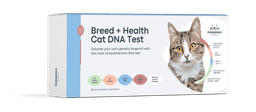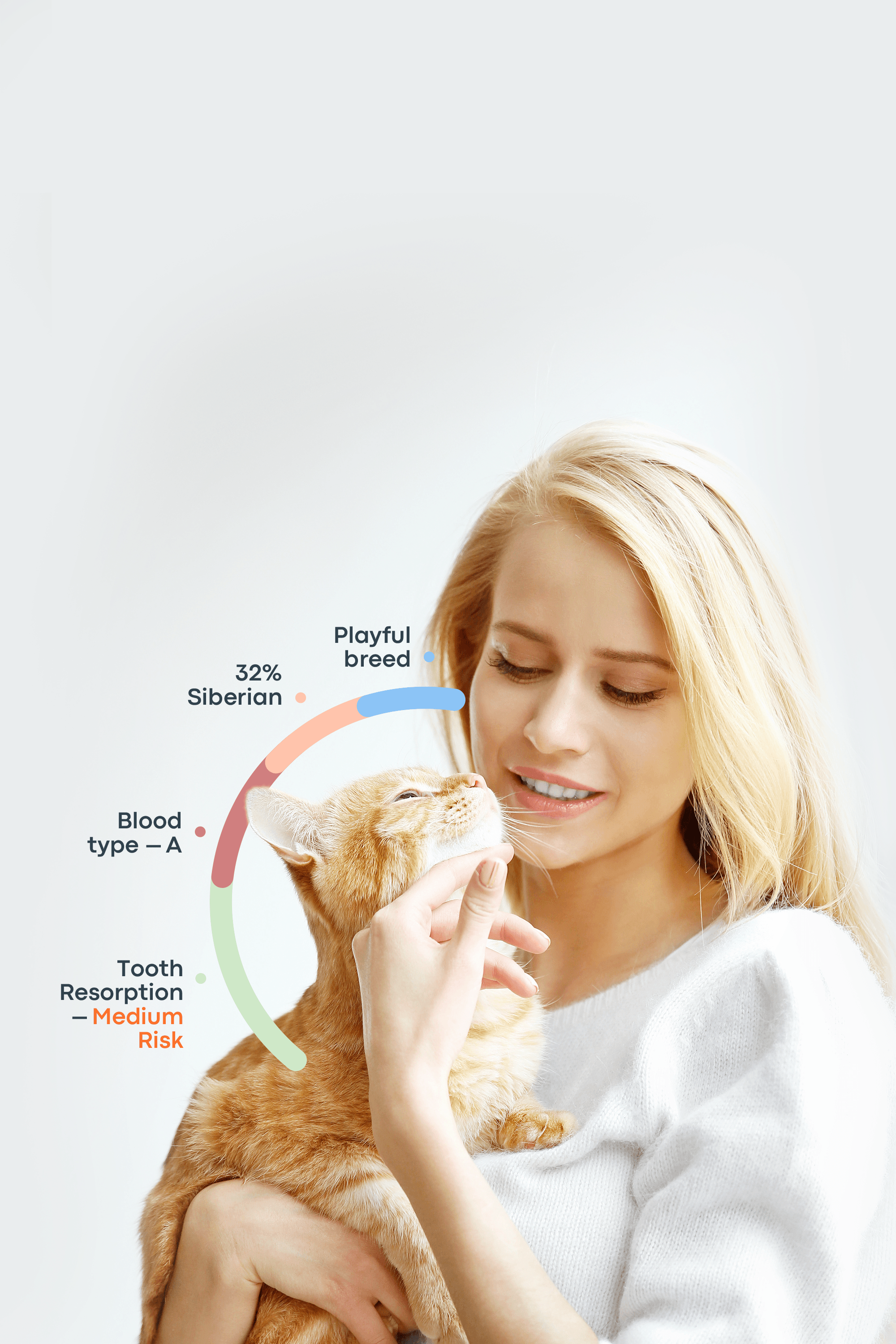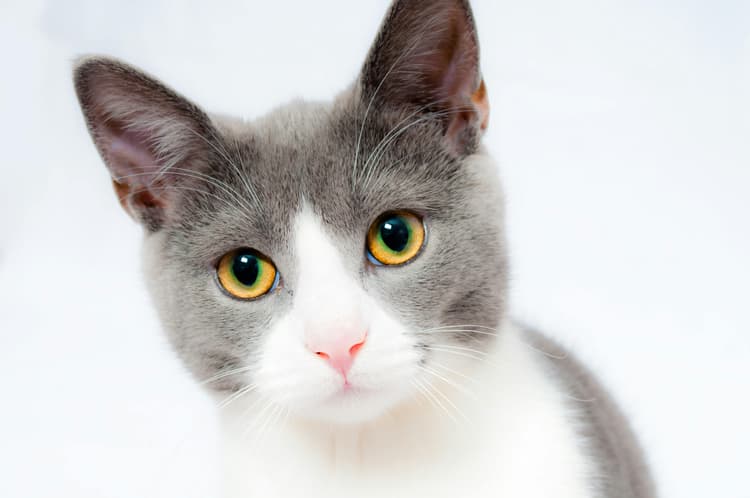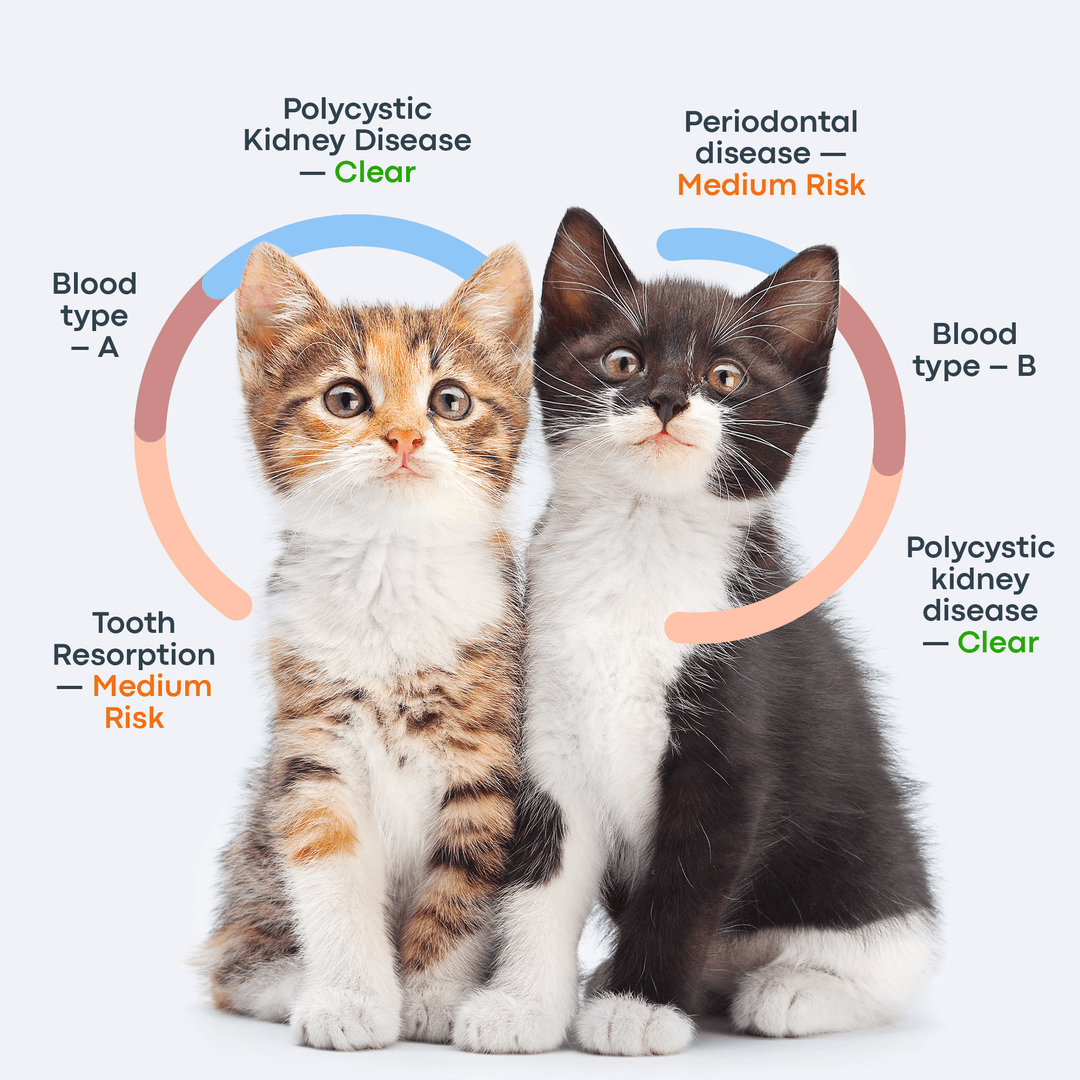Cats can develop food allergies when their immune system reacts to certain proteins, such as chicken, beef, fish, or dairy. This can lead to itchy skin, hair loss, or digestive issues like vomiting and diarrhea. While food allergies aren’t extremely common, they can significantly affect your cat’s comfort and quality of life. Because these symptoms often overlap with other conditions, pinpointing food as the cause can be tricky. Early identification of the allergen—with your veterinarian’s guidance—is key to providing your cat with the right diet and relief.
Cat Food Allergy Symptoms
According to PetMD, the most common signs of food allergy in cats are skin problems, digestive issues, or a combination of both.
Mild cases may present as occasional itching or minor tummy troubles.
Severe cases can involve both skin and digestive symptoms, causing significant discomfort.
Unlike seasonal or environmental allergies, food allergy symptoms usually persist year-round until the trigger is identified and removed.
Skin Issues
Itching: Cats may scratch, bite, or chew their skin, leading to sores or blisters that sometimes require antibiotics.
Overgrooming: Excessive licking, often in specific areas, is one of the most common cat food allergy symptoms.
Dull coat: Poor nutrient absorption can result in a dry, lackluster coat.
Hair loss: Scratching and overgrooming may cause bald patches and thinning fur.
Sores and lesions: Constant irritation can damage the skin barrier, leading to open wounds, scabs, and infections.
Gastrointestinal Issues
Vomiting: Some proteins may be difficult for cats to digest, causing vomiting.
Diarrhea: Poor digestion can also result in frequent or loose stools.
Frequent bowel movements: Cats may strain or pass stool more often if their bowels are irritated.
Scooting: Soft or irregular stools can irritate the anal area, prompting your cat to drag their bottom along the floor.
What Are Cats Allergic to in Food? What Are The Causes of Cat Food Allergy?
Cat food allergies occur when a cat’s immune system mistakenly identifies a harmless food ingredient as a threat. If the cat consumes that ingredient repeatedly, their immune system “remembers” it and overreacts, leading to skin problems or digestive issues. While the most common cat food allergies include chicken, beef, fish, and dairy, virtually any food ingredient can trigger a reaction.
Food allergy symptoms usually appear in cats that are three months or older. True food allergies are rare in younger kittens because their immune systems are still developing.
Genetics
Genetics can play a major role in food allergies. Some cats are naturally more prone to allergic reactions due to their breed or family history. For example, Siamese and Siamese crosses are more susceptible to developing food allergies. A cat that inherits a sensitive immune system is more likely to overreact to certain foods over time.
Environmental allergies
Cats with existing environmental allergies—also called atopy—are at a higher risk of developing food allergies. Reactions to pollen, dust, or flea bites can “prime” the immune system, making it more likely to overreact to harmless food ingredients. When the immune system is already on high alert, even previously safe foods may trigger skin and digestive problems.
Long-term exposure
Some cats may suddenly develop an allergy to a food they have eaten for years without any issues. This occurs because food allergies often develop gradually, as the immune system becomes sensitized over time. One day, the body may start reacting to the same ingredient, causing symptoms to appear seemingly out of nowhere.
Most Common Cat Food Allergies
Most cats with food allergies react to proteins such as dairy, fish, beef, or poultry. Some cats may also be sensitive to other ingredients, including gluten, grains, or certain carbohydrates. While protein is the most common trigger, any food ingredient has the potential to cause a reaction. In rare cases, cats may be allergic to novel proteins like rabbit or lamb, or to grains such as corn or barley.
As mentioned earlier, food allergies can develop at any age, even in cats that have eaten the same food for years without problems. Studies show that fewer than 1% of cats are truly allergic to specific foods. However, among cats suffering from chronic itching, food allergies account for nearly 15% of cases. Overall, 1–6% of feline skin problems are linked to food allergies.
Cat Allergic to Chicken
Many cat owners are surprised to learn that chicken is one of the most common food allergens in cats. Symptoms of chicken allergy in cats often include skin irritation and scratching, particularly around the face, ears, paws, and belly, as well as digestive issues like vomiting or diarrhea.
Because these signs can stem from multiple causes, the only reliable way to confirm a chicken allergy is through an elimination diet. This involves feeding your cat a diet with a novel protein or hydrolyzed protein for several weeks, then gradually reintroducing chicken to see if symptoms reappear.
If your cat is allergic, all chicken must be eliminated from their food and treats. Check labels carefully, as chicken is commonly found in kibble, canned food, and even supplements.
Food Allergy Dermatitis in Cats
When discussing common cat food allergies, it is equally important to mention food allergy dermatitis, a skin condition caused by allergens in the diet. Common signs include:
Blisters or crusty patches
Small bumps (papules) or raised lesions (plaques)
Open sores in severe cases
Constant licking, scratching, and chewing can worsen the skin and may lead to secondary infections. Bacterial or yeast infections are common and often require treatment with antibiotics, antifungals, or steroids.
How to Tell if a Cat Is Allergic to Food
Elimination diet
An elimination diet is the most reliable way to diagnose a food allergy in cats. It involves feeding a special diet that contains either a novel protein your cat has never eaten before or a hydrolyzed protein, which is broken down into tiny pieces so the immune system does not recognize it.
The diet must be fed exclusively for 8–12 weeks.
During this period, your cat cannot have treats, flavored medications, or table scraps—only the prescribed food.
If symptoms improve during the trial and then reappear when the original food (like chicken or fish) is reintroduced, a food allergy is confirmed.
Blood, saliva, and hair tests
Although these tests are marketed as easy alternatives, they are not reliable for diagnosing food allergies in cats. They often produce false positives or negatives because they measure antibodies that do not always correlate with true food allergies.
Diet history
A detailed diet history is one of the most valuable tools you can provide to your veterinarian to help them diagnose food allergies in cats. Track every:
Food and treats
Table scraps
Flavored medications
Supplements
Documenting all potential sources of protein helps identify common allergens and guides the elimination diet. Without a thorough record, hidden ingredients may be missed, which can interfere with accurate testing and diagnosis.
Treating and Managing Food Allergies in Cats
Once a food allergy is diagnosed, the only way to keep your cat healthy and comfortable is strict, long-term control of their diet. There are several approaches to managing food allergies:
Novel Protein Diet – Feed your cat a protein source they have never eaten before, such as duck, venison, rabbit, or kangaroo.
Hydrolyzed Protein Diet – Proteins are broken down into very small pieces so the immune system is less likely to recognize and react to them.
Home-Prepared Diet – Designed with a veterinary nutritionist, this diet uses a novel protein and carbohydrate source along with supplements to ensure complete nutrition.
Diet Type | What It Involves | Examples | Advantages | Limitations / Challenges |
Novel Protein Diet | Uses a protein and carbohydrate source your cat has never eaten | Rabbit, kangaroo, emu, duck, venison, pea-based | Usually palatable; simple concept; ideal for cats with limited prior exposure to these proteins | Difficult to find a truly novel source if the cat has eaten many commercial diets |
Hydrolyzed Protein Diet | Proteins broken down into small, easy-to-digest pieces to avoid immune recognition | Hills Science Z/D®, Purina Pro Plan HA | Scientifically proven, suitable for long-term feeding, widely available as prescription diets | Not available over-the-counter; some cats may dislike the taste; more expensive |
Home-Prepared Diet | Vet-designed, home-cooked food using a novel protein and supplements | Kangaroo, duck, venison with probiotics like Hillary’s Blend® | Complete control over ingredients; avoids cross-contamination | Time-consuming; requires strict compliance; may be challenging to balance nutrients without expert guidance |
Points to note
Be cautious with “limited-ingredient” retail foods. These products may still contain trace amounts of common proteins, which can trigger a reaction. Prescription diets are often safer.
Dietary needs vary. Some cats require a lifelong strict diet, while others may tolerate carefully selected novel proteins without issues.
Short-term medications. During food trials, your veterinarian may prescribe corticosteroids or antibiotics to control itching or treat secondary infections, but these are typically temporary measures.
Good prognosis. If food allergens are consistently avoided, most cats live healthy, comfortable lives.
Conclusion
Cats with food allergies do not have to suffer. With the right diagnosis and a carefully tailored diet, most cats go on to live healthy, comfortable, and itch-free lives. While it may take time and patience to identify the right food, the benefits for your cat’s long-term well-being are significant.
If you suspect your cat has some cat food allergy symptoms, always consult your veterinarian before making any dietary changes. Your vet can guide you through safe food trials and help you select the best plan to manage your pet’s symptoms effectively.
Frequently Asked Questions
How long does it take for food allergies to go away in cats?
Symptoms can improve anywhere from 1 to 9 weeks, and in some cases, it may take up to 12 weeks after starting a novel elimination diet.
Are cats ever allergic to chicken or turkey as ingredients in pet food?
Yes, chicken and turkey are common protein sources, and some cats are allergic to them.
Can a cat develop a food allergy to a food they have eaten for years?
Yes. Over time, a cat’s immune system can overreact to a protein they have eaten for years, producing antibodies that trigger inflammation and allergic symptoms.
How to find out if your cat is allergic to chicken byproducts?
With the guidance of your veterinarian, you can conduct an elimination diet trial. This involves feeding a novel or hydrolyzed protein diet and carefully monitoring symptoms to determine if chicken byproducts are the cause.







